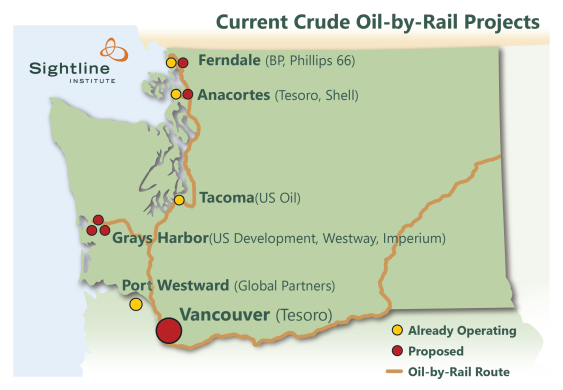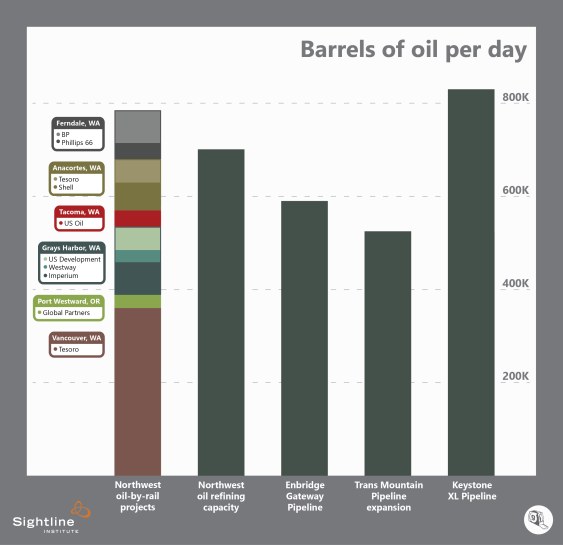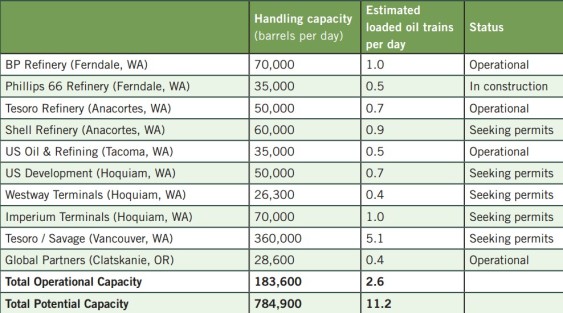Editor’s note: The report referenced below is a living document, and Sightline researchers update it regularly to reflect new developments. For the most recent facts and figures, please see the report, The Northwest’s Pipeline on Rails.
Sightline is re-releasing a popular report: The Northwest’s Pipeline on Rails. It’s the most comprehensive regional analysis of plans to ship crude oil by train.  Moving large quantities of oil by rail would represent a major change for the Northwest’s energy economy, and the plans now in development puts the region’s communities at risk.
Moving large quantities of oil by rail would represent a major change for the Northwest’s energy economy, and the plans now in development puts the region’s communities at risk.
Why does it matter?
- In Oregon and Washington, 10 refineries and port terminals are planning, building, or already operating oil-by-rail shipments.
- If all of the projects were built and operated at full capacity, they would put an estimated 11 loaded mile-long trains per day on the Northwest’s railway system. Many worry about the risk of oil spills from thousands of loaded oil trains that may soon traverse the region each year.
- A string of high profile oil train explosions has raised widespread concern about the risks of moving crude oil by rail through populated areas. States and local governments across North America are beginning to seek more information about oil shipments and demand stricter tank car standards from federal regulators.

- Taken together, the oil-by-rail projects planned for the Northwest would be capable of delivering enough fuel to exceed the region’s oil refining capacity. Ironically, two of the facilities that would handle oil by rail were originally built to supply renewable fuels.
- The projects are designed to transport fuel from the Bakken oil formation in North Dakota, but the infrastructure could also be used to export Canadian tar sands oil. In fact, if all of the oil-by-rail projects were built, they would be capable of moving 785,000 barrels per day—that’s more oil capacity than either of the controversial pipelines planned in British Columbia, and nearly as much as the planned Keystone XL pipeline.
- On Puget Sound, three of the region’s five refineries already receive oil-by-rail shipments, and the other two are planning new facilities. Three proposals for Grays Harbor would move oil along the Washington coast. And on the Columbia River, one port terminal is already receiving oil-by-rail shipments, while officials at Vancouver are planning by far the region’s largest facility.
Read the full report here: The Northwest’s Pipeline on Rails.



Comments are closed.